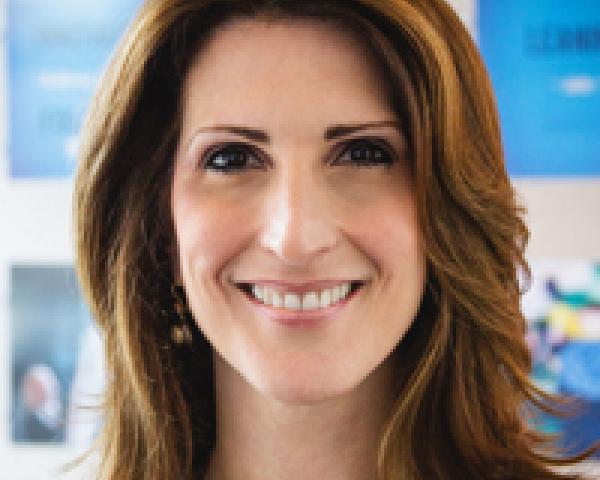We have written extensively on the direct costs of dealing with wellness vendors, which often do wellness
to employees instead of doing it
for them. Employers in self-administered programs tend to focus much more on cultural improvements—the “for” instead of the “to.” However, there’s not really a vendor business model in doing wellness
for employees. Cultural improvements tend to be internally driven, generating few transactions of the type for which vendors get paid and brokers get commissioned.
In sharp contrast to the internal development of a wellness culture, the wellness industry is completely transactional. It’s all about the number of risk assessments, screens, coaching sessions, “biggest loser contest” participants, etc.
Further, the wellness industry is completely unregulated. It claims to offer healthcare, but it is required to know nothing about healthcare. The industry's disregard for clinical guidelines is the stuff of legend—
one vendor has even bragged about it—and it counts fines levied upon
employees refusing to submit to pry-poke-and-prod as “savings.” Quite literally, you can become a wellness vendor with
five days of classroom training.
See Also: Wellness Promoters Agree: It Doesn't Work
Any time you have an unregulated industry, bad actors take over. You have the equivalent of Gresham’s Law in economics, which states that bad money chases out good, meaning that people hoard gold coins and spend paper currency. In wellness, dishonest vendors chase out honest vendors, because—aside from the esteemed
Validation Institute—there is no resource a layperson can consult to know who’s telling the truth and who’s cheating. Vendors promising that wellness will generate massive savings will always win contracts over vendors who tell the truth, especially because consultants and brokers can’t seem to figure this stuff out for themselves or are chasing the greater fees that come with the easier route of making up high ROIs.
We see this at
Quizzify, too. We guarantee an ROI, explicitly define how it is measured (while allowing customers to choose their own measurement instead) and have V-I validation. But we still hear: "Your fees are so low that your 2-to-1 guarantee won’t even save us $100/employee.” Um, yeah, but these very same employers actually
lose at least $100/employee using dishonest wellness vendors and pay much more for the privilege.
Our past postings and articles have covered the direct damage that these dishonest wellness vendors have done to employers and employees: the fees, the
harms to employees, the
reduced productivity and the morale impact. Others with different perspectives have addressed
privacy/intrusiveness and
economic discrimination.
But wait. There’s more.
The Indirect Harms of Wellness
Overlooked in the voluminous criticism of wellness vendors is the dog that didn’t bark in the nighttime. Specifically, there are a large number of important items that get overlooked or that are under-resourced in employer settings because of this pervasive wellness obsession. There are so many such items that ITL and I are going to run an entire series devoted to the topics below. These topics aren’t wellness, but that’s exactly the point: Wellness “harms” employees in the following ways because it distracts people in human resources from doing their jobs.
Hospital safety. It turns out to be comparatively easy to get hospitals to focus on safety: Simply don’t pay them for “never events” (shocking errors, such as surgery to the wrong part of the body, that should never occur). Hospital safety issues are very expensive and are far more common than you would think. Leapfrog Group has an entire strategy, policy and how-to guide on that.
PBMS. There’s a reason the pharmacy benefit management (PBM) industry has enjoyed the greatest stock appreciation of any industry in the last 30 years. It’s because those fancy contractual metrics they sell you are profit-making machines for them. The industry has more ways to snooker you than even wellness vendors do. The industry's contracts take opacity to a new plateau. We’ll look at some of them in our later series and will see what can be done to get a better deal.
Overuse. While everyone is focused on preventing cardiometabolic admissions (which turn out to be quite rare to begin with in the employer-insured population), providers are running amok with spinal fusions and other procedures. Spinal fusions fail at a high rate and can entail painful complications. Even when they don’t, they are expensive and arduous to recover from. Yet, the average company spends more on spinal fusions than on any admissions category other than birth events and joint replacements.
Opioids. Marx was wrong: Religion isn’t the opiate of the masses. Opioids are the opiate of the masses. You may have a major problem and simply not know about it. Overuse of pain medication may be five to 10 times as big a problem in your workplace as overeating, so why would people spend five to 10 times the time and effort on overeating as on opioid addiction?
See Also: Triathlete's View on Workplace Wellness
Non-inpatient spending. Aside from about 10 procedures, there is not a lot to be gained by trying to “keep people out of the hospital.” Most commercially insured people already are “out of the hospital.” Take out birth events, trauma and orthopedics… and maybe 3% of your employees end up in the hospital in a given year. Most of that 3% is simply not preventable. Yet, outside those hospital walls, a ridiculous numbers of resources are overused, misused, etc.—right under your eyes and are just completely ignored by wellness vendors. Our last post will cover this topic.
So, keep your eyes open. This series will appear approximately weekly, subject to breaking wellness news and, of course, the occasional demands of the darn day job.










 Nokia and the others had classic strategic advantages that should have protected them: strong product differentiation, trusted brands, leading operating systems, excellent logistics, protective regulation, huge R&D budgets and massive scale.
But Apple imagined the iPhone and iOS as more than a product or a conduit for services. They were a way to connect participants in two-sided markets — app developers on one side and app users on the other.
These generated value for both groups and allowed Apple to charge a tax on each transaction. As the number of developers increased, so did the number of users. This created the “network effect” — a process in which the value snowballs as more production attracts more consumption and more consumption leads to more production.
By January 2015. the company’s App Store offered 1.4 million apps and had cumulatively generated $25 billion for developers.
Just as malls have linked consumers and merchants, newspapers have long linked subscribers and advertisers. What has changed is that technology has reduced the need to own infrastructure and assets and made it significantly cheaper to build and scale digital platforms.
Traditional businesses, called “pipelines” by Parker, Van Alstyne and Choudary, create value by controlling a linear series of processes. The inputs at one end of the value chain, materials provided by suppliers, undergo a series of transformations to make them worth more.
Nokia and the others had classic strategic advantages that should have protected them: strong product differentiation, trusted brands, leading operating systems, excellent logistics, protective regulation, huge R&D budgets and massive scale.
But Apple imagined the iPhone and iOS as more than a product or a conduit for services. They were a way to connect participants in two-sided markets — app developers on one side and app users on the other.
These generated value for both groups and allowed Apple to charge a tax on each transaction. As the number of developers increased, so did the number of users. This created the “network effect” — a process in which the value snowballs as more production attracts more consumption and more consumption leads to more production.
By January 2015. the company’s App Store offered 1.4 million apps and had cumulatively generated $25 billion for developers.
Just as malls have linked consumers and merchants, newspapers have long linked subscribers and advertisers. What has changed is that technology has reduced the need to own infrastructure and assets and made it significantly cheaper to build and scale digital platforms.
Traditional businesses, called “pipelines” by Parker, Van Alstyne and Choudary, create value by controlling a linear series of processes. The inputs at one end of the value chain, materials provided by suppliers, undergo a series of transformations to make them worth more.
 Apple’s handset business was a classic pipeline, but when combined with the App Store, the marketplace that connects developers with users, it became a platform. As a platform, it grew exponentially because of the network effects.
The authors say that the move from pipeline to platform involves three key shifts:
Apple’s handset business was a classic pipeline, but when combined with the App Store, the marketplace that connects developers with users, it became a platform. As a platform, it grew exponentially because of the network effects.
The authors say that the move from pipeline to platform involves three key shifts:





